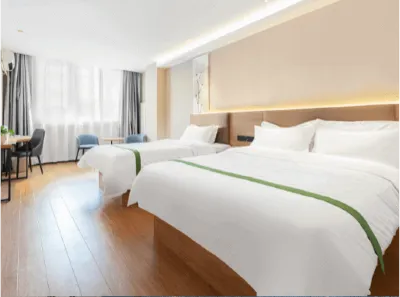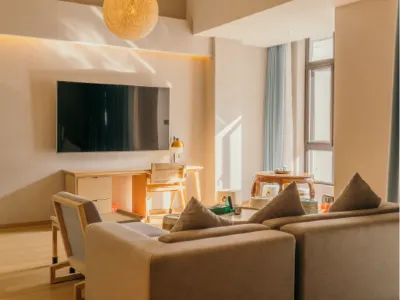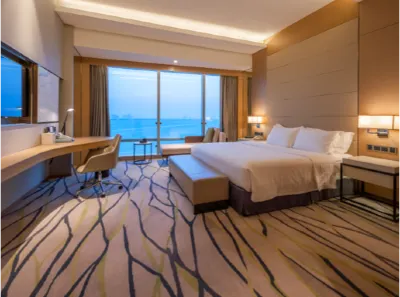
Best Nara Hotels
Enter your dates for prices and availability of the best hotels in Nara.
Swipe up to view more
Filter by:
Hotel Star Rating
≤2345
Guest Rating
Amazing 9+Great 8+Good 7+Pleasant 6+Popular Filters for Nara
Breakfast includedNon-smoking rooms2 bedsSignature hot springParking availablePublic bathsDinner includedHotelFree cancellationGreat 9+Property Type
HotelLove hotelRyokanVacation homeVillaLodgeGuest houseApartmentBed and breakfastHomestayHostelInnProperty facilities & services
Parking availablePublic bathsCurrency exchangeFree parkingSaunaSpaLuggage storageGymPoolLaundry roomSmoking areaWi-Fi in public areasRestaurant24-hour front deskElevatorGolf courseBarbecueCar rentalsWake-up callEV charging stationConference roomBar107 Best Hotels to Stay in Nara
Find great hotels in Nara on Trip.com! Read guest reviews, compare the latest prices, and explore hotel details to choose your perfect stay.
Most Booked
Lowest Price
Closest to Downtown
Highest Rated
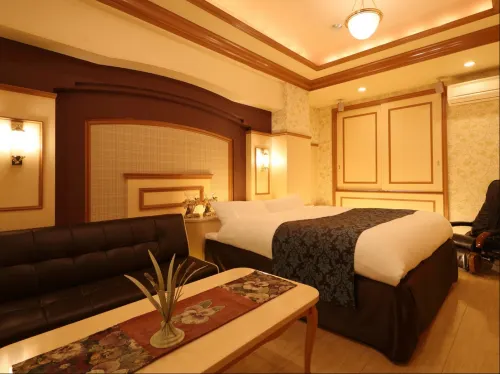
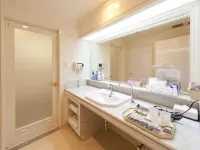
3
Hotels in Nara
Public parking
24-hour front desk
Luggage storage
+2
"The room was spacious and well-equipped with a massage chair, a round dining table, a microwave, three refrigerators, a large bathtub, and a bidet area. The accommodation was fantastic. The only downside is that it's quite a distance from the city center, about a 10-minute walk from the hotel to the Route 48 bus stop."
Very Good
172 reviews
8.5/10
1 night
From PHP 1,608
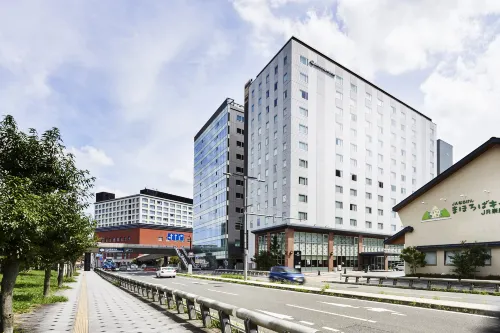
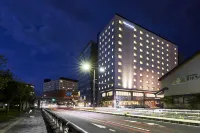
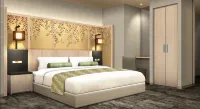

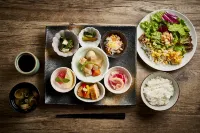
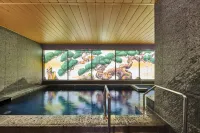
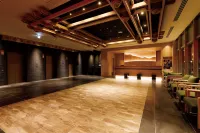
99+
Hotels in Nara
Private parking
Hot springs
Massage room
+5
"Excellent room, neat and clean. They got everything you need in the self serve counter, facial cleanser, toner, you name it they have it. Big bath tub and super comfy bed. Extraordinarily buffet breakfast and good position, right next to Nara station. One more thing to mention is their services, better than any other place."
Amazing
679 reviews
9.4/10
1 night
From PHP 3,133
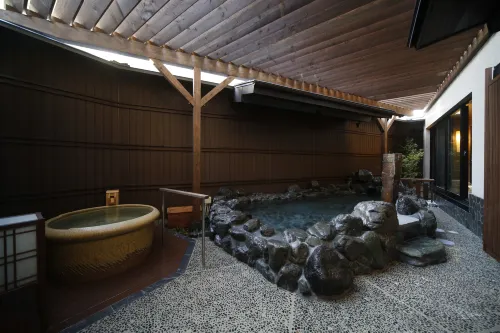
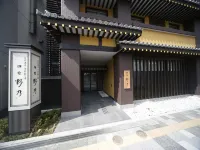
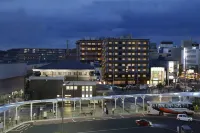
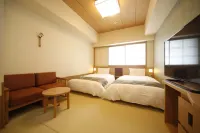
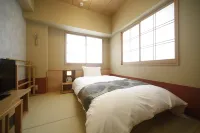
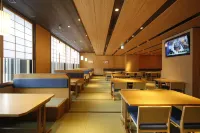

99+
Hotels in Nara
Public parking
Hot springs
Sauna
+6
"Apart from the room being a bit on the small side, everything else was excellent. This is a hot spring hotel where guests wear provided robes/yukata and remove their shoes. It's very baby-friendly: they offered a set of baby clothes and toiletries, and high chairs were available in the dining area. Dinner consisted of soy sauce noodles and drinks. Breakfast was generous, featuring a variety of Nara specialties served in many small dishes. The hot springs are located on the first floor, with separate facilities for men and women. Indoors, there are warm and cold pools, and outdoors, there's an open-air bath, along with a sauna. Showers are available after your soak. It's advised that infants and young children avoid the very hot or very cold springs; a simple shower is sufficient for them. Outside the onsen, you can enjoy popsicles and read manga, which kids will particularly enjoy."
Amazing
1030 reviews
9.5/10
1 night
From PHP 4,318

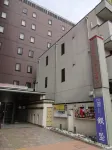
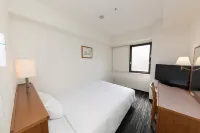

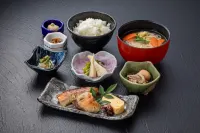

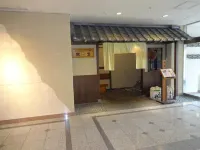
50
Hotels in Nara
Private parking
Massage room
24-hour front desk
+3
"Located a 6-8 minute walk from Nara Station, the hotel is right on a main street. It's surrounded by plenty of shops, making it incredibly convenient for both shopping and dining. Todai-ji Temple and Kofuku-ji Temple are also easily accessible. The place was clean, the front desk staff were very friendly, and they offered luggage storage before check-in. Overall, we had a very satisfactory stay."
Very Good
125 reviews
8.9/10
1 night
From PHP 2,254
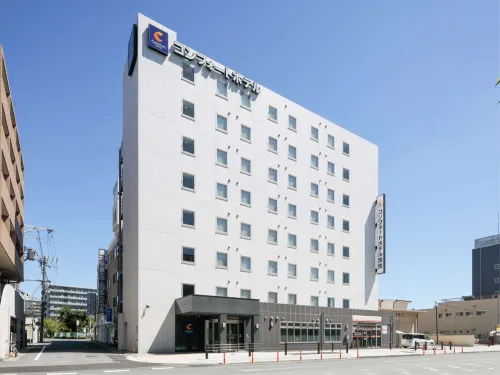

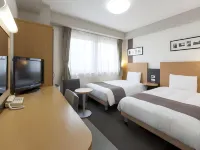
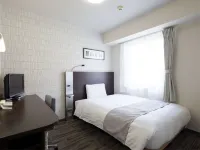
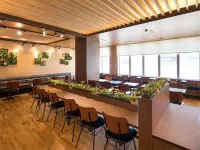
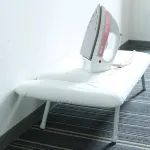
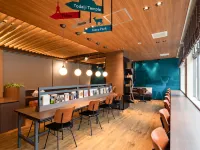
99+
Hotels in Nara
24-hour front desk
Luggage storage
"It's very comfortable as its name. The staff are friendly and helpful. They have Laundromat coined machines plus driers on 5th floor. It's very convenient. However, the breakfast is almost totally the same. I stayed there 4 nights. They changed a few menus. If you don't mind, you can get some meal box from AEON supermarket at JR Nara station and warm it with the microwave at the hotel. That's fine."
Great
324 reviews
9.1/10
1 night
From PHP 2,934
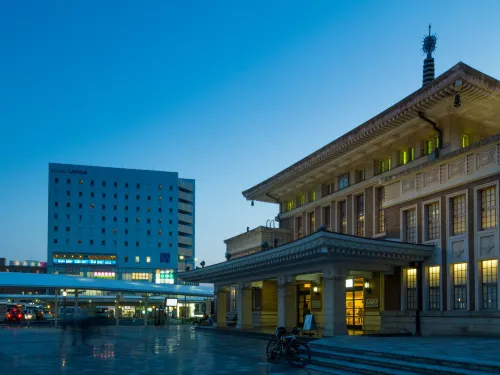

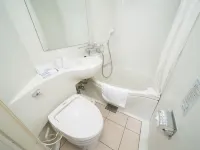
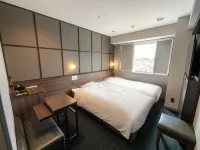
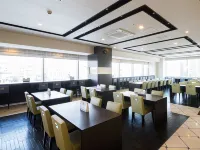
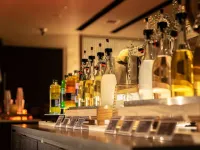

99+
Hotels in Nara
Private parking
Hot springs
Luggage storage
+2
"The room size is quite generous for Japan, and it's well-designed with two tables, which were very convenient for placing items or using as a dining table. It was the most thoughtfully designed room in terms of facilities on this trip! It's right next to the JR station with a direct connecting passage, which is incredibly convenient! Despite that, there was absolutely no noise in the room, and I slept very well. 👍"
Amazing
274 reviews
9.4/10
1 night
From PHP 2,627
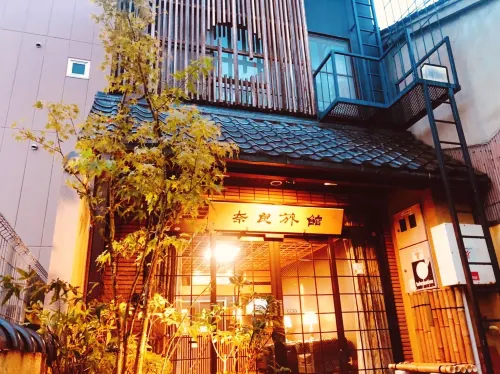
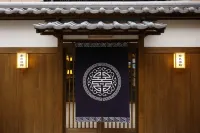

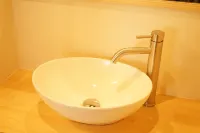
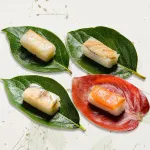
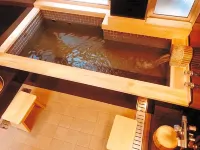
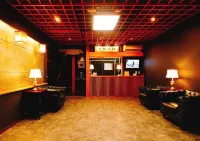
63
Hotels in Nara
Luggage storage
Wi-Fi in public areas
Laundry room
"This place was so cute and excellent. Staff didn't speak much English, but we were able to communicate easily enough. Room was Japanese Ryokan style. Tatami mats, low table. It had everything needed, shower and toilet in the room too. There is also an onsen that you can reserve for your private use. I asked for a time later at night and they still had one spot available. If you can't get a time then it is ”public use” after 22:00, which seems to mean that you might need to share if others want to join. Location was very good, right in the middle of the historic part of town and a short walk (<5 min) to Nara park to see the deer. Hotel was very nice and clean. I was here in late December and the air conditioning heater in the room was very good too."
Great
75 reviews
9.3/10
1 night
From PHP 2,329
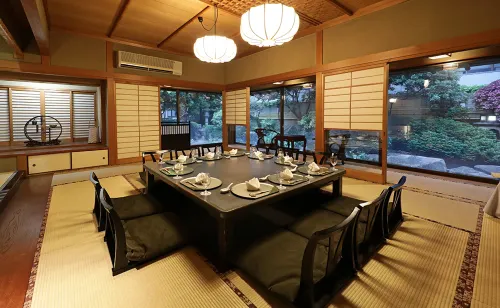
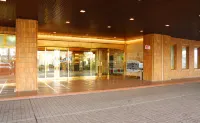

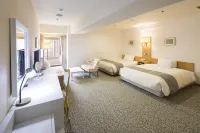
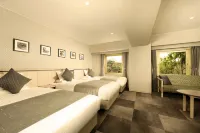
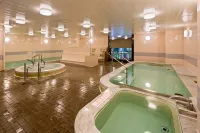
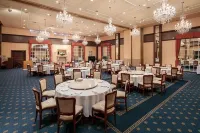
99+
Hotels in Nara
Public parking
Hot springs
Sauna
+9
"The room was spacious and spotlessly clean, including the bedding. While the room was well-equipped, some facilities felt a bit dated. However, both the interior and exterior of the building exuded an aristocratic grandeur. The front desk staff were incredibly polite, professional, and went above and beyond to help guests with any issues. The hot spring had specific operating hours, and unfortunately, I didn't get the chance to experience it, which was a slight disappointment."
Great
138 reviews
9.1/10
1 night
From PHP 2,901
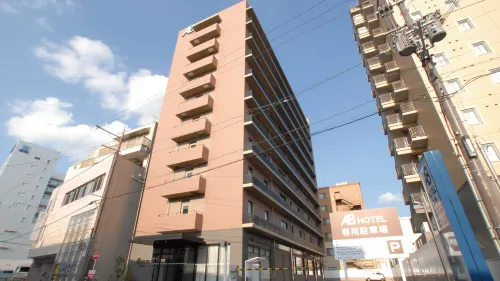
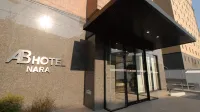
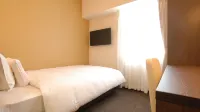


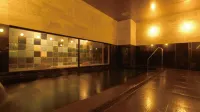
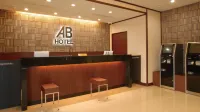
89
Hotels in Nara
Private parking
Luggage storage
Restaurant
+3
"Excellent location to Nara Train Station and buses to the attractions in Nara.
Less than 5 minutes walk from the Nara train station.
Room is small like all Japanese hotels, but the shower stall is large like North American ones.
Quite a number of choices for breakfast."
Great
209 reviews
9.1/10
1 night
From PHP 1,998
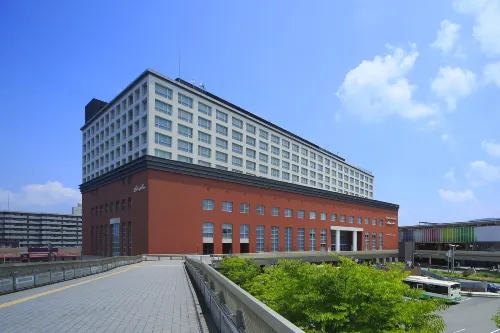
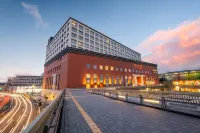
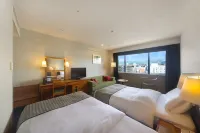
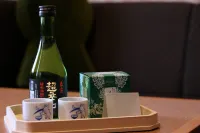
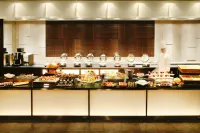
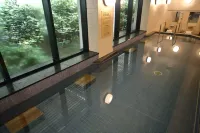
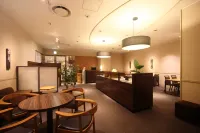
99+
Hotels in Nara
Public parking
Hiking
Spa
+11
"Hotel Nikko truly lives up to its reputation as a renowned Japanese hotel chain. Hotel Nikko Nara is ideally located right at the exit of JR Nara Station. With bus terminals (both north and south plazas) conveniently situated just outside, it offers exceptional ease of access to Nara Park and other major attractions. The hotel's service attitude was also outstanding. Immediately upon check-in, a kind staff member from the hotel lounge noticed we had a child with us and thoughtfully prepared two different flavored juices and cookies for us to take to our room. It was such a considerate gesture to help tide us over! After returning to the hotel from our outing, we were pleasantly surprised to find our clothes and toys neatly organized and even arranged adorably. They truly went the extra mile!"
Very Good
525 reviews
8.9/10
1 night
From PHP 3,158
Trending places in Nara
Find top attractions and hotspots in Nara
Landmarks
Nara Park
105 hotels
Tōdai-ji
107 hotels
Nara Station
105 hotels
Kasugataisha Shrine
107 hotels
Toshodaiji
105 hotels
KINTETSU-NARA
102 hotels
Browse by hotel type
Immerse yourself in the vibrant atmosphere of Nara with our handpicked accommodation options
Most-booked Nara hotels
See all
Check out these top-booked hotels from the past 30 days!
No.1
9.4/10
597 reviewIroha Grand Hotel Kintetsu Nara Ekimae
Hotel near Nara
"Near shopping area""Convenient for shopping"
Select dates to view pricesNo.2
9.6/10
346 reviewNovotel Nara
Hotel near Nara
"Delicious breakfast""Large rooms"
Select dates to view pricesNo.3
9.1/10
587 reviewHenn na Hotel Premier Nara
Hotel near Nara
"Easy to get around""Great value for money"
Select dates to view pricesNo.4
8.9/10
366 reviewSmile Hotel Nara
Hotel near Nara
"Convenient location""Easy to get around"
Select dates to view pricesNo.5
9.5/10
99 reviewRyokan Asukasou at the Entrancne of Nara Park
Hotel near Nara
"Relaxing hot springs""Great service"
Select dates to view pricesNo.6
8.4/10
64 reviewHOTEL LiVEMAX Nara Ekimae
Hotel near Nara
"Convenient location""Great location"
Select dates to view pricesNo.7
9.3/10
453 reviewNara Hotel
Hotel near Nara
"Delicious breakfast""Classy environment"
Select dates to view pricesNo.8
9.0/10
172 reviewCenturion Hotel Classic Nara Station
Hotel near Nara
"Great rooms""Convenient location"
Select dates to view pricesNo.9
9.4/10
566 reviewPiazza Hotel Nara
Hotel near Nara
"Easy to get around""Near shopping area"
Select dates to view pricesNo.10
9.0/10
88 reviewHotel Pagoda
Hotel near Nara
"Great rooms""Convenient location"
Select dates to view pricesBest Nara hotels with breakfast
See all
Start your day with a tasty breakfast at one of our top hotels in Nara.
JW Marriott Hotel Nara
Hotel near Nara
The JW Marriott Nara, the first international luxury hotel in Nara, welcomes guests to enjoy sophistication with a personal touch. Select from 158 gracefully-appointed guest rooms, including 16 suites, offering a complete range of modern amenities and conveniences. Our Nara luxury hotel offers an array of dining options, including the multi-concept food theatre Silk Road Dining, specialty Japanese restaurant 'Azekura', and the lounge bar 'Flying Stag'. Enjoy a refreshing workout in the 24-hour fitness center, a swim in the indoor pool, or get pampered with a massage, facial, or other treatments at the hotel's luxury spa. Upgrade to a more personalized experience in our Executive Lounge, offering concierge service, exquisite F&B offerings, and a private meeting room. Our professional meeting and wedding planners are ready to customize the perfect event utilizing our hotel's ballroom and four additional meeting rooms as well the ample space in the connecting convention center, the largest in Nara.
9.4/10
Amazing119 reviewPrice per night from:PHP 13,684
Shisui, a Luxury Collection Hotel, Nara
Hotel near Nara
Nestled on the western edge of Nara Park, one of Japan’s most famous scenic spots, the Yoshikien area where our luxury hotel is located is surrounded by World Heritage Sites such as Kasuga Taisha Shrine, Kofukuji Temple, and Todaiji Temple, and has been protected by efforts to maintain the area’s lush greenery to ensure a scenic and serene environment. The name of our Nara luxury hotel derives from the “purple trunk and green leaves (Shikan Suiyou)” – scenic vistas that have been cherished in Nara since ancient times. Just like the name, guests can indulge in the history and traditions of the city when staying at our Nara Park hotel, as well as the mystical flow of time that surrounds it.
9.6/10
Amazing94 reviewPrice per night from:PHP 23,108
Hotel Tenpyo Naramachi
Hotel near Nara
With a stay at Hotel Tenpyo Naramachi, you'll be centrally located in Nara, steps from Nara Park and Sarusawa Pond Park. This hotel is 0.7 mi (1.1 km) from Nara Prefectural Cultural Hall and 0.7 mi (1.1 km) from Kofuku-ji Temple.
Make use of convenient amenities, which include complimentary wireless internet access and a vending machine.
Featured amenities include luggage storage, an elevator, and microwave in a common area.
Make yourself at home in one of the 44 air-conditioned rooms featuring refrigerators and flat-screen televisions. Your room comes with a Tempur-Pedic bed. Complimentary wireless internet access keeps you connected, and digital programming is available for your entertainment. Bathrooms feature showers, complimentary toiletries, and bidets.
9.1/10
Great57 reviewPrice per night from:PHP 5,247
Setre Naramachi
Hotel near Nara
With a stay at SETRE NARAMACHI in Nara (Naramachi), you'll be within a 15-minute drive of Nara Park and Nara Kenko Land. This hotel is 0.1 mi (0.1 km) from Sarusawa Pond Park and 0.2 mi (0.4 km) from Gango-ji Temple.
Take advantage of recreation opportunities such as bicycles to rent or take in the view from a terrace and a garden.
At SETRE NARAMACHI, enjoy a satisfying meal at the restaurant. Buffet breakfasts are available daily from 7:30 AM to 9:30 AM for a fee.
Featured amenities include a 24-hour front desk, luggage storage, and a library.
Make yourself at home in one of the 32 air-conditioned rooms featuring refrigerators and flat-screen televisions. Complimentary wireless internet access is available to keep you connected. Bathrooms feature shower/tub combinations, complimentary toiletries, and hair dryers. Conveniences include electric kettles and complimentary bottled water, and housekeeping is provided daily.
9.7/10
Amazing40 reviewPrice per night from:PHP 6,954
Kasuga Hotel
Hotel near Nara
With a stay at Kasuga Hotel, you'll be centrally located in Nara, steps from Nara Park and within a 10-minute walk of Kofuku-ji Temple. This ryokan is 0.5 mi (0.8 km) from Nara Prefectural Cultural Hall and 0.7 mi (1.1 km) from Todaiji Temple.
Make use of convenient amenities, which include complimentary wireless internet access and gift shops/newsstands.
Satisfy your appetite for dinner at Japanese Restaurant Kasug, a restaurant which specializes in Japanese cuisine, or stay in and take advantage of the room service. Full breakfasts are available daily from 7 AM to 8:30 AM for a fee.
Featured amenities include a computer station, luggage storage, and a safe deposit box at the front desk. Free self parking is available onsite.
Make yourself at home in one of the 30 air-conditioned rooms featuring LCD televisions. Complimentary wireless internet access is available to keep you connected. Bathrooms have complimentary toiletries and bidets.
9.3/10
Great109 reviewPrice per night from:PHP 8,719
Mikasa
Hotel near Nara
When you stay at Mikasa Ryokan in Nara, you'll be in the historical district, within a 15-minute drive of Nara Park and Nara Kenko Land. This spa ryokan is 0.9 mi (1.5 km) from Shosoin Temple and 1 mi (1.6 km) from Todai-ji.
Take time to pamper yourself with a visit to the full-service spa. Additional amenities at this ryokan include complimentary wireless internet access, gift shops/newsstands, and a vending machine.
Quench your thirst with your favorite drink at the bar/lounge. Japanese breakfasts are available daily from 7:00 AM to 8:30 AM for a fee.
Featured amenities include complimentary newspapers in the lobby, luggage storage, and a safe deposit box at the front desk. A train station pick-up service is provided at no charge, and free self parking is available onsite.
Make yourself at home in one of the 34 air-conditioned rooms featuring refrigerators and flat-screen televisions. Complimentary wireless internet access keeps you connected, and digital programming is available for your entertainment. Private bathrooms with showers feature bidets and hair dryers. Conveniences include phones, as well as safes and electric kettles.
9.3/10
Great84 reviewPrice per night from:PHP 15,184
Fufu Nara
Hotel near Nara
With a stay at Fufu Nara in Nara, you'll be a 5-minute walk from Nara Park and 6 minutes by foot from Ukimido Hall. This spa hotel is 0.5 mi (0.8 km) from Nara National Museum and 0.5 mi (0.9 km) from Okumura Commemorative Museum.
Take time to pamper yourself with a visit to the full-service spa. Additional features at this hotel include complimentary wireless internet access and concierge services.
At Fufu Nara, enjoy a satisfying meal at the restaurant. Wrap up your day with a drink at the bar/lounge. Local cuisine breakfasts are available daily from 8:00 AM to 10:00 AM for a fee.
Featured amenities include complimentary newspapers in the lobby and a safe deposit box at the front desk. Free valet parking is available onsite.
Treat yourself to a stay in one of the 30 individually decorated guestrooms, featuring outdoor private hot tubs and flat-screen televisions. Rooms have private furnished balconies. Complimentary wired and wireless internet access is available. Conveniences include phones, as well as safes and desks.
9.5/10
Amazing50 reviewPrice per night from:PHP 55,110
Hotel New Wakasa
Hotel near Nara
When you stay at Hotel New Wakasa in Nara, you'll be in the historical district, just steps from Nara Park and 6 minutes by foot from Nara Prefectural Cultural Hall. This spa inn is 0.3 mi (0.5 km) from Nara Woman's University and 0.3 mi (0.6 km) from Todaiji Temple.
Pamper yourself with a visit to the spa, which offers massages. Additional features at this inn include complimentary wireless internet access, concierge services, and gift shops/newsstands.
Enjoy a meal at Traditional Dining Room, or stay in and take advantage of the inn's room service (during limited hours). Japanese breakfasts are served on weekdays from 8:00 AM to 9:00 AM for a fee.
Featured amenities include complimentary newspapers in the lobby, dry cleaning/laundry services, and luggage storage. This inn has 3 meeting rooms available for events. Free self parking is available onsite.
Make yourself at home in one of the 25 air-conditioned rooms featuring refrigerators. Complimentary wireless internet access is available to keep you connected. Bathrooms feature separate bathtubs and showers with rainfall showerheads and complimentary toiletries. Conveniences include phones, as well as safes and blackout drapes/curtains.
9.1/10
Great59 reviewPrice per night from:PHP 7,833
Ando Hotel Nara Wakakusayama -Dlight Life & Hotels-
Hotel near Nara
When you stay at ANDO HOTEL NaraWakakusayama~DLIGHT LIFE & HOTELS~ in Nara, you'll be in the historical district, within a 5-minute drive of Nara Park and Nara Prefectural Cultural Hall. This family-friendly hotel is 1.7 mi (2.7 km) from Todaiji Temple and 2 mi (3.3 km) from Sarusawa Pond Park.
Enjoy recreation amenities such as an outdoor pool or take in the view from a terrace. This hotel also features complimentary wireless internet access, concierge services, and wedding services.
Enjoy a meal at the restaurant or snacks in the hotel's coffee shop/cafe. Wrap up your day with a drink at the bar/lounge. Japanese breakfasts are available daily from 8:00 AM to 10:00 AM for a fee.
Featured amenities include multilingual staff, luggage storage, and a safe deposit box at the front desk. A train station pick-up service is provided at no charge, and free self parking is available onsite.
Make yourself at home in one of the 21 guestrooms featuring refrigerators. Complimentary wireless internet access keeps you connected, and digital programming is available for your entertainment. Bathrooms feature separate bathtubs and showers, complimentary toiletries, and bidets. Conveniences include phones, as well as safes and complimentary bottled water.
9.7/10
Amazing47 reviewPrice per night from:PHP 18,923
Kamenoi Hotel Nara
Hotel near Nara
KAMENOI HOTEL NARA provides flawless service and all the necessary facilities for visitors.Stay connected with your associates, as complimentary Wi-Fi is available during your entire visit. The ryokan offers taxi and shuttle amenities for your ease in navigating around Nara. When arriving by car, you'll be grateful for the on-site complimentary parking at ryokan. The ryokan offers reception amenities including luggage storage and safety deposit boxes to ensure a comfortable stay for guests. The ryokan's daily housekeeping ensures an excellent option for your stay.To ensure the well-being and convenience of all visitors, smoking is strictly prohibited throughout the entire ryokan.Smoking is permitted solely in the specified smoking zones allocated by ryokan.In order to ensure the utmost level of relaxation, the guestrooms feature an inviting design and are equipped with all basic necessities, creating a delightful stay experience. To ensure a pleasant stay, a selection of rooms at ryokan come furnished with linen service, blackout curtains and air conditioning, all designed with your ease in mind. In select rooms, visitors can enjoy a touch of amusement with the availability of television and cable TV for their entertainment needs.Within specific rooms, a refrigerator, a coffee or tea maker, bottled water and instant tea is conveniently available for your use. Understanding the significance of bathroom facilities in enhancing visitor contentment, ryokan offers a hair dryer, toiletries and towels within a few chosen chambers. Start your day stress-free at KAMENOI HOTEL NARA as breakfast is made available for you on the premises. Various excellent meal offerings at ryokan ensure that enticing and easily accessible options are constantly available.Upon your arrival, don't miss experiencing karaoke rooms for enjoyable in-house evening entertainment. Throughout the day and night, guests can enjoy light refreshments with the ryokan offering vending machines.
8.4/10
Very Good40 reviewPrice per night from:PHP 5,213
Latest reviews for Nara hotels
See all
Browse these genuine traveler ratings and real guest reviews to find the best Nara hotels.
9.6/10
Amazing
TTravelguruBig and spacious room with great shower facility. There is an onsen for guest at the basement which are seperated gender. On the same floor, there is a rest area with coin payable laudromat. Room was quiet and peaceful to rest in. They provide very comfy pyjamas for you to wear as well. There is a kitchen with equiped ammnities that you can request at the reception counter. Overall great experience and wll defintely go back again
9.5/10
Amazing
AAnonymous UserThe hotel's location is fantastic, right next to the subway station, making it incredibly easy to find upon exit. Just diagonally across from the hotel, there's a bustling shopping street, offering great convenience for dining and shopping. There's a bus stop right outside the hotel with direct service to Nara Park, allowing you to get off and leisurely explore the area. We booked a room including breakfast, which was a buffet. The front desk staff were also very friendly and welcoming. If you arrive early, you can even store your luggage with them and go explore before check-in.
9.0/10
Great
AANNAModern stylish hotel. Room was spacious with panoramic view. Cozy comfortable matres and soft pillow.
Very hospitality staff. In every moment try to help you.
You may see Nara deers from cafe terrace.
Convenient and quiet location. Not too many tourists. Grocery and a lot of deers near.
Paid parking about 700 yens per weekday.
I couldn't eat Japanese breakfast. It was too conceptual and unusual. But western breakfast is ok.
I recommend you not to pay for hotel breakfast. Because of its unpalatable and at a high price for this place.
Handy laundry. One washing costs 600 yens.
9.0/10
Great
GGuest UserHotel is at Kintetsu Nara station. Easily accessible when taking train. Nice quaint area to walk. Room has humidifier, kettle and cups, hairdryer, mini fridge and a tv. Breakfast comes with delicious thick toast set and coffee. Laundromat is at the cosy lobby area. I stayed for 2 nights. Many good eateries around the area and shopping malls. Tourist attractions are walking distance only. Highly recommend this hotel 👍🏻
8.9/10
Very Good
Wwee teeBooked this hotel through Trip which was a godsend. The hotel that I booked through ******* was screwed up big time by ******* because the hotel didn't receive the reservation apparently. ******* was not helpful with the relocation (even thought there were availability at other hotels), claiming the hotel class are different from the one I booked. Anyways this hotel is convenient and clean, only thing that I disliked was the site mentioned double bed BUT only can accommodate 1 person!? Ended we have to pay additional ¥3k for the 3rd person (my youngest daughter) for 2 rooms. 1 room for myself and the other for both daughters because the manager was adamant about the 1 room per person, however after paying the additional ¥3k he was ok with 2 persons in a room. Didn't make sense unless I was explained it is some government regulations to allow only 1 double bed room for 1 person
8.9/10
Very Good
GGuest UserThis hotel is exactly something what we expected to experience with a Japanese style room and hot spring. We chose Japanese style room which was spacious enough for 3 guests. Hotel fee already included Japanese dinner served inside room and breakfast (Japanese or American) served in their restaurant. Hot spring is available from 4pm-11pm, however, no morning session is available which a bit disappointed us. Hot spring area is not big, it is more enjoyable when there are only 2-3 guest in the pool.
Hotel location is good, only about 6 mins walk from Kintetsu Nara station. The only bad thing was NO elevator or escalator from the station up to ground floor exit. All other main tourist attractions are within walkable distance.
8.2/10
Very Good
GGuest UserThe location is right in the shopping street and also at the Kintetsu exit, it is only 15 minutes to go to the park. The staff is warm and courteous, the hot springs are fine but quiet enough. The hotel is old but tidy, there is no daily necessities except old towels, including a blow dryer in the hot spring area, and there is nothing towels lock. Of course, this price can't be too much, remember this is a hotel. I was impressed by the invincible location and courteous staff, I can't say whether I like it or not.
8.1/10
Very Good
MM379358****The landlord is a Chinese girl, so it is rare to have someone to communicate with directly in a foreign country, which is very helpful.
The room is not big, but the bed is very comfortable. It also has electric oil mattress and electric mattress, which is enough for a good sleep.
The shower, toilet and kitchen were all clean and suitable for my use.
The location is not at Nara Park, but closer to Toshodaiji Temple and Heiseigu Shrine. There is a business supermarket not far away.
The most surprising thing is that the owner has a car for rent, which greatly speeds up my journey and perfectly expands the scope of my travel. Thumbs up!
8.0/10
Very Good
WWensenWe really appreciated the stay at the old traditionnal timber house, everything is kept in its style. The lifestyle also is part of the house : everyone is playing the game, being very silent and respectful, sharing a very nice traditionnal kitchen. The house may miss one more shower but it still works. I totally recommand the experience !!
7.6/10
Good
GGuest UserFirst of all, the service staff is warm and thoughtful, and the attitude is amiable! Tell the precautions, the hotel is clean and hygienic, and the quilt is covered by yourself. The bathroom in the bath is particularly clean. Every guest is very conscious. Try to control yourself and not disturb others. It is really great!
FAQs About Nara Hotels
What is the average price of a hotel in Nara for this weekend?
According to the latest 12-month data from Trip.com, the average price for a 3-star hotel in Nara this weekend is PHP 10,097 per night. For a 4-star hotel, the average cost is PHP 26,989 per night. If you're looking for a luxury experience, 5-star hotels in Nara this weekend typically cost PHP 33,787 per night.
How much do hotels in Nara cost per night during weekdays?
Based on the latest 12-month data from Trip.com, the average price for a 3-star hotel in Nara during weekdays is PHP 9,030 per night. For a 4-star hotel, you can expect to pay around PHP 24,251 per night. If you're seeking a luxury stay, 5-star hotels in Nara generally cost PHP 30,496 per night on weekdays.
What are the best places to stay in Nara?
What are the top hotels in Nara near Nara Park?
Some of the top hotels in Nara near Nara Park include Hotel Pagoda (from PHP 1,102), Ryokan Asukasou at the Entrancne of Nara Park (from PHP 3,829) and Nara Hotel (from PHP 12,374), all offering easy access to Nara Park, making them ideal for visitors looking to explore the area.
Where can I find the best hotels in Nara?
Nara has some of the best hotels for you to select. Whether you're traveling for business or on a vacation, Onyado Nono Nara Natural Hot Spring (from PHP 2,818), Hotel Nikko Nara (from PHP 3,000) and Daiwa Roynet Hotel Nara Natural Hot Spring (from PHP 2,884) are preferred hotels.
What is the best spa hotel in Nara?
Getting tired after a long walk? Hotel Nikko Nara (from PHP 3,000), JW Marriott Hotel Nara (from PHP 12,764) and Hotel Asyl Nara (from PHP 2,362) provide highly rated spa services.
What’s the best hotel in Nara with hot springs?
Wanna experience hot springs in your hotel? Onyado Nono Nara Natural Hot Spring (from PHP 2,818), Daiwa Roynet Hotel Nara Natural Hot Spring (from PHP 2,884) and Ryokan Asukasou at the Entrancne of Nara Park (from PHP 3,829) have hot springs. Book now!
What are some hotels with pools in Nara?
JW Marriott Hotel Nara (from PHP 12,764), Ando Hotel Nara Wakakusayama -Dlight Life & Hotels- (from PHP 18,135) and Nara Park Hotel (from PHP 1,881) are hotels with swimming pools. Stay at any of these hotels to enjoy a swimming pool!
Where can you find hotels with excellent breakfast in Nara?
Hotel Nikko Nara (from PHP 3,000),Novotel Nara (from PHP 2,950) and Nara Hotel (from PHP 12,374) provide high-quality breakfast. Start your day with fresh, delicious breakfast!
Where can I find the best hotel discounts in Nara?
Trip.com provides various promotions and discounts for users all year round. You can check the promotions page to see what promotions are available on Trip.com.
Nara Hotels Info
Highest Price
PHP 67,559
Lowest Price
PHP 2,080
Number of Reviews
9,722
Total Properties
107
Weekday Avg. Price
PHP 12,467
Weekend Avg. Price
PHP 13,792
Keep Exploring Nara
Popular Nara Hotels
Hotel Fine Garden Nara HoraiPiazza Hotel NaraToyoko Inn Kintetsu Nara EkimaeHotel PagodaNovotel NaraHaruya NaramachiSuper Hotel Premier Jr Nara EkiHotel Nikko NaraSuper Hotel Jr Nara Ekimae Sanjo DoriCenturion Hotel Classic Nara StationHotels near Imanishike ShoinHotels near JR Kizu StationHotels near Saidai-jiHotels near Koriyama(Nara) StationHotels near Nishinokyō Station
Popular Nara Areas
Popular Cities
Trip.com Latest Trends
AKaiTiYa Hotels in DaliVacances Bleues Hotels in Aix-les-BainsRakuten STAY Hotels in Kuala LumpurROSEATE HOTELS & RESORTS Hotels in EdinburghNH Collection Hotels in ValenciaZsmart Hotel (Shanghai North Bund Red House Hospital Branch) ReviewsLandison Hotel Penang ReviewsMEILIE Homestay ReviewsRUMAH UNIVERSITI ReviewsBeijing Dongdan Hotel ReviewsGrand Riviera Suites photos, Grand Riviera Suites images, Grand Riviera Suites photo gallery, Grand Riviera Suites guest reviews, Grand Riviera Suites room photos, Grand Riviera Suites amenities list, Grand Riviera Suites interior views, Grand Riviera Suites exterior picturesPeppers Cradle Mountain Lodge photos, Peppers Cradle Mountain Lodge images, Peppers Cradle Mountain Lodge photo gallery, Peppers Cradle Mountain Lodge guest reviews, Peppers Cradle Mountain Lodge room photos, Peppers Cradle Mountain Lodge amenities list, Peppers Cradle Mountain Lodge interior views, Peppers Cradle Mountain Lodge exterior picturesThe Westin Resort Guam photos, The Westin Resort Guam images, The Westin Resort Guam photo gallery, The Westin Resort Guam guest reviews, The Westin Resort Guam room photos, The Westin Resort Guam amenities list, The Westin Resort Guam interior views, The Westin Resort Guam exterior picturesCapri by Fraser Bukit Bintang photos, Capri by Fraser Bukit Bintang images, Capri by Fraser Bukit Bintang photo gallery, Capri by Fraser Bukit Bintang guest reviews, Capri by Fraser Bukit Bintang room photos, Capri by Fraser Bukit Bintang amenities list, Capri by Fraser Bukit Bintang interior views, Capri by Fraser Bukit Bintang exterior picturesVictoria Inn photos, Victoria Inn images, Victoria Inn photo gallery, Victoria Inn guest reviews, Victoria Inn room photos, Victoria Inn amenities list, Victoria Inn interior views, Victoria Inn exterior pictures
